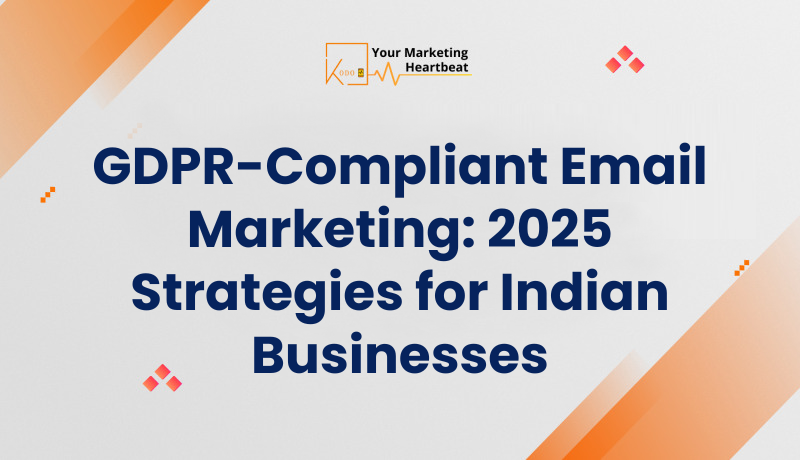
GDPR-Compliant Email Marketing: 2025 Strategies for Indian Businesses
Table of Contents
- Understanding GDPR for Indian Businesses
- Key Compliance Strategies
- Comparison with the CAN-SPAM Act
- Tools for List Hygiene Automation
- Best Practices for 2025
Understanding GDPR for Indian Businesses
The General Data Protection Regulation (GDPR) is a pivotal framework that governs how personal data of EU citizens is handled. For Indian businesses, understanding GDPR is crucial, especially if they deal with customers in the European Union. Non-compliance can lead to severe penalties, which can be financially crippling.
GDPR emphasizes the importance of transparency and user consent. It requires organizations to inform users about what data is being collected, the purpose behind the collection, and how that data will be used. This regulation is not just a legal obligation; it also serves as a trust-building measure with your customers.
In 2025, as digital marketing strategies evolve, it’s essential for Indian businesses to adopt GDPR-compliant practices in their email marketing efforts. This means that businesses must ensure that their email campaigns align with the principles of data protection and privacy outlined in the GDPR.
Key Compliance Strategies
Double Opt-In Workflows
One of the most effective ways to ensure GDPR email compliance is by implementing double opt-in workflows. This process requires users to confirm their subscription to your email list twice: first by entering their email address and second by clicking a confirmation link sent to that address.
Benefits of Double Opt-In:
- Enhanced List Quality: This method ensures that only genuinely interested individuals are added to your email list, improving engagement rates.
- Legal Protection: By obtaining explicit consent, you reduce the risk of non-compliance with GDPR regulations.
To implement a double opt-in process, consider these steps:
- Create a user-friendly sign-up form that clearly states what users are subscribing to.
- Send a confirmation email that explains the benefits of subscribing.
- Include a clear call to action for users to confirm their subscription.
Unsubscribe Links
Equally important is providing an easy way for subscribers to opt-out of your email communications. GDPR mandates that users should have the right to withdraw their consent at any time.
Best Practices for Unsubscribe Links:
- Visibility: Make the unsubscribe link prominent in every email.
- Simplicity: Ensure that the process is straightforward and does not require excessive steps.
- Feedback Option: Consider asking for feedback on why they are unsubscribing, but don’t make it mandatory.
Consent Management
Managing consent effectively is crucial for GDPR compliance. This involves keeping clear records of how and when consent was obtained from subscribers.
Strategies for Effective Consent Management:
- Documentation: Maintain a database that records consent details, including the date, time, and method of consent.
- Regular Audits: Conduct regular audits of your email lists to ensure compliance and remove inactive users.
- Clear Communication: Always inform users of their rights regarding their personal data and how they can exercise them.
Comparison with the CAN-SPAM Act
While GDPR focuses on the protection of personal data, the CAN-SPAM Act in the United States emphasizes the right of consumers to stop receiving unwanted emails. Understanding the differences between these regulations is essential for businesses operating in multiple jurisdictions.
Key Differences:
- Consent Requirements: GDPR requires explicit consent for marketing emails, while CAN-SPAM allows for implied consent.
- Penalties: GDPR imposes stricter penalties for non-compliance, potentially reaching up to 4% of a company’s global turnover, while CAN-SPAM violations typically result in lower fines.
By understanding these differences, Indian businesses can tailor their email marketing strategies to ensure compliance across different regions, thereby expanding their market reach without legal repercussions.
Tools for List Hygiene Automation
Maintaining a clean and engaged email list is vital for successful email marketing. List hygiene automation tools can help streamline this process by automatically managing subscriptions, removals, and data accuracy.
Recommended Tools:
- Mailchimp: Offers automated list management features and segmentation options.
- ActiveCampaign: Provides advanced automation capabilities for subscriber engagement.
- HubSpot: Includes tools for tracking user interactions and managing consent.
By utilizing these tools, businesses can enhance their email marketing effectiveness while ensuring compliance with GDPR regulations.
Best Practices for 2025
As we move into 2025, businesses must adapt their email marketing strategies to align with evolving regulations and consumer expectations. Here are some best practices to consider:
- Prioritize Data Security: Invest in robust security measures to protect customer data from breaches.
- Regularly Update Privacy Policies: Ensure that your privacy policies reflect current practices and comply with GDPR.
- Foster Transparency: Be open with your subscribers about how their data will be used and provide options for them to manage their preferences.
- Engage with Personalization: Use data responsibly to personalize email content, enhancing user experience while respecting privacy.
- Monitor Compliance: Regularly review your email marketing practices to ensure continued compliance with GDPR and other relevant laws.
By implementing these strategies, Indian businesses can create a sustainable and compliant email marketing framework, fostering trust and engagement with their audience.
In conclusion, GDPR compliance is not just a legal requirement but a strategic advantage for Indian businesses engaging in email marketing. By adopting best practices, understanding regulatory frameworks, and utilizing the right tools, companies can enhance their marketing efforts while building lasting relationships with their customers.
